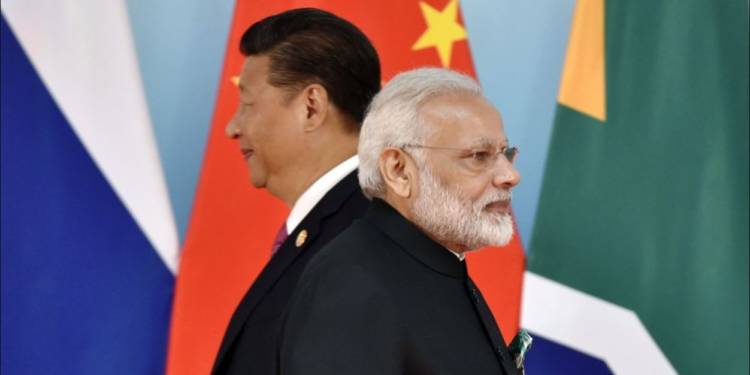Amidst the ongoing Coronavirus Pandemic, China has been reviving its territorial and maritime disputes in its vicinity. With India, China got involved in a face-off at Sikkim and rising tensions in Ladakh. TFI has been reporting how things have heated up in Ladakh with reports of scuffles and the IAF rushing in fighter jets after Chinese helicopters were spotted flying close to the Line of Actual Control (LAC).
Beijing’s actions have created a situation ripe for India to take back Aksai Chin from China. Let us tell you how. Business Standard has reported that starting in the third week of April, around 5,000 People’s Liberation Army (PLA) troops have infiltrated into five points in Ladakh- four along the Galwan River, and one near the Pangong Lake, which happen to be the points of confrontation between India and China over the past few days.
This is a huge provocation coming from China, and it is for the first time since the Kargil war of 1999 that Indian territory has come to be occupied by foreign soldiers. The Line of Actual Control (LAC) is a de facto border and intrusions from China are common due to differing perceptions of the effective Sino-India border.
But things are different this time, and China can no longer take the defence of border disputes. Most of the infiltration is happening along the Galwan river, where the LAC is not disputed. LAC in the Galwan valley corresponds to China’s official claim line, and therefore the PLA is not intruding inadvertently, but infiltrating deliberately.
By sending in thousands of PLA soldiers along the Galwan River, China has violated even its own perception of the Sino-India border, and as per Business Standard its troops have managed to come as deep as three to four kilometres inside what is India’s own territory even in Beijing’s opinion.
This is not a routine confrontation or misunderstanding at a localised level, as sources say that the Chinese soldiers are digging in defences, preparing bunkers, moving in heavy vehicles and even positioning artillery guns inside their own territory to back up the infiltrators.
In fact, the Business Standard claims that Beijing is widening the ongoing turmoil in Ladakh by initiating infiltration in southern Ladakh. Also, on May 5 there was clash between 250 soldiers of the Indian Army and the People’s Liberation Army troops at the Pangong Tso lake following an attempted Chinese intrusion. Tensions are thus escalating across Ladakh.
Meanwhile, the Indian Army Chief has made a low-key visit to Ladakh for a security review amidst simmering tensions between India and Ladakh.
Army chief Gen MM Naravane makes low-key visit to Ladakh as India-China tensions simmer along the disputed border.https://t.co/hbQYvA4OpM pic.twitter.com/cRdtbf3LQ0
— Rahul Singh (@rahulsinghx) May 23, 2020
What is happening in Ladakh is unprecedented, and China has set itself up for a limited war in the Ladakh region.
If PLA soldiers currently occupy features which Beijing agrees falls under India’s territory, then it is not really upon India to disengage from here. India can go for the jugular to remove PLA soldiers as a part of its sovereign right to defend its territory and evict foreign soldiers.
This could be a huge opportunity for India to escalate the matter into taking back Aksai Chin– a part of the Union Territory of Ladakh which is currently under illegal Chinese occupation. Not only the PLA has crossed the line this time with the location and size of infiltration, but China is already facing a global backlash which should help New Delhi.
If and when matters escalate India would have the global opinion on its side. Alice Wells, the Outgoing Assistant Secretary for South and Central Asia has already said that border disputes with China, whether in the South China Sea or in Ladakh, are a “reminder of the threat by China”. Thus, the United States is bound to back India expressly if matters heat up in Ladakh.
Moreover, China is emerging as the aggressor everywhere in its vicinity. Southeast Asian nations are battling Chinese expansionism in the South China Sea as Beijing continues to press its illegal claims in the strategic waterways. Chinese vessels have also been intruding into Japan’s territorial waters. Within Asia, there is every possibility of China’s adversaries across the East China Sea and South China Sea firmly backing India.
The People’s Liberation Army doesn’t really have the stomach to fight a war. It has never won a major contest, and even the 1962 war was provoked by Mao in order to deflect attention from the crippling famine within China that had been triggered by his ‘Smash Sparrow’ campaign, killing millions.
India can now do to China in Ladakh, what it had done to the country in Sikkim (Nathu La battle) five decades ago. China has taken matters to far for disengagement and thus it is a major opportunity for India to up the ante and reclaim Aksai Chin.


































